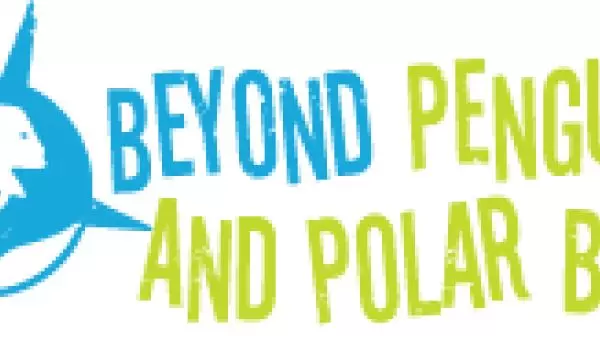
<em>Beyond Penguins and Polar Bears</em> Covers Diverse Scientific Themes and Lessons
The vast polar regions of the Arctic and Antarctic are famously known for massive polar bears and "tuxedo-dressed" penguins. Yet, these regions are comprised of so much more. They can teach lessons about the environment, geology, physics and the people who live there.
Beyond Penguins and Polar Bears is a National Science Foundation- (NSF) funded, free online magazine that prepares kindergarten through 5th grade teachers to teach the science of polar regions using inquiry-based teaching instruction along with reading, writing and scientific discourse.
"The exclusive focus on elementary science makes this project stand out from many other online resources," said Jessica Fries-Gaither, an education resource specialist at the Ohio State University and project director of Beyond Penguins and Polar Bears.
In January 2011, Beyond Penguins and Polar Bears received Science magazine's Science Prize for Online Resources in Education (SPORE) for being an innovative, free online resource for science education.
Science magazine is published by the American Association for the Advancement of Science and awards the SPORE prize "to encourage innovation and excellence in education, as well as to encourage the use of high-quality on-line resources by students, teachers and the public."
Participants were judged by the editors of Science and a panel consisting of teachers and researchers in relevant fields, chaired by the Editor-in-Chief of Science. Winners were invited to write an essay describing their resources for publication in Science.
In Beyond Penguins and Polar Bears, "We focused on increasing teachers' content knowledge in science and literacy, and supporting their ability to integrate their science and literacy teaching," said Fries-Gaither. "Improving teacher content and pedagogical knowledge can lead to improved student achievement, and integrating science and literacy instruction not only saves time in a crowded curriculum, but also can improve achievement in both areas."
The International Polar Year (IPY), a period of scientific exploration and study of the Arctic and Antarctica from 2008-2009, inspired the online magazine.
"Education and outreach was a major component of the IPY and we felt we had a chance to engage elementary teachers and their students with these fascinating, yet misunderstood places," said Fries-Gaither.
The magazine also blossomed as an initiative to create an online resource specifically for elementary science, which Fries-Gaither explained was difficult to find. She said that the focus for many elementary classrooms is on math and reading, and many elementary school teachers are not comfortable teaching science "because of a lack of content knowledge."
"We felt we had an opportunity to address these challenges by creating a free online magazine full of exemplary content and resources, and one that encouraged teachers to weave science content into the reading and writing that they were already teaching," said Fries-Gaither.
Magazine themes span from weather and climate to arctic peoples and polar explorers. Using real-world examples, the magazine covers concepts such as: fossils, the water cycle, states and changes of matter, rocks and minerals, solar energy, renewable and nonrenewable resources, heat, buoyancy and density.
Beyond Penguins and Polar Bears also incorporates language arts activities to help students develop reading comprehension skills, vocabulary and listening comprehension. Students also write research reports.
Each issue of the magazine is organized into the following departments:
Professional Learning: designed for teachers to increase their own knowledge about the polar regions and offer teaching strategies.
Science and Literacy: provides teaching resources for reading, writing and verbal activities, including a feature story written for elementary students.
Across the Curriculum: connects the issue theme to popular culture and other disciplines such as mathematics, geography, culture and art.
In the Field: Scientists at Work: offers accounts by scientists, past and present, working in the polar regions.
Polar News and Notes: provides current news, upcoming broadcasts and other opportunities.
Beyond Penguins and Polar Bears also offers podcasts that correspond to magazine issues, and a polar photo gallery. The magazine can be translated into 13 different languages including English, Spanish, Russian and Japanese.
All of the Beyond Penguins and Polar Bears resources correlate to national standards, such as the National Science Education Standards and the National Council of Teachers of English/International Reading Standards for the English Language Arts.
"We've closely aligned our issues with the elementary curriculum," said Fries-Gaither. "In today's educational climate, if resources don't clearly relate to what teachers are expected to cover, they won't be used."
Although the initial goals for the magazine have been completed, the team continues to promote the project through conference presentations, web seminars and social media, such as Facebook and Twitter.
The team is also in the process of moving the magazine's entire website to a new permanent home at Ohio State. Currently, the magazine is available at both the old website and the new website. After October 31, the magazine will be available exclusively at the new website.
The team also produces content for its NSF-funded sister website: Beyond Weather and the Water Cycle. Fries-Gaither explained that this free online magazine covers issues that "discuss the essential principles of climate literacy and relate them to the elementary curriculum."


